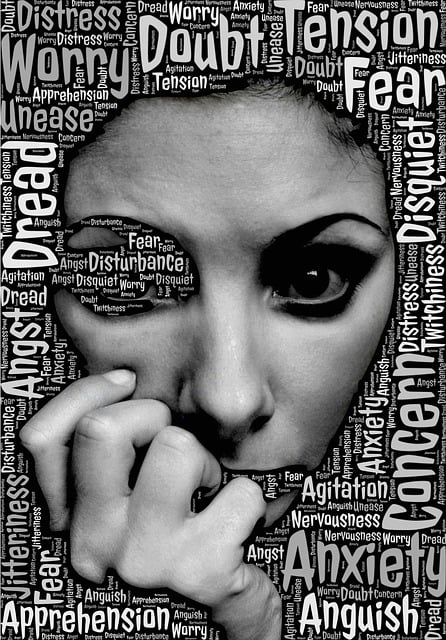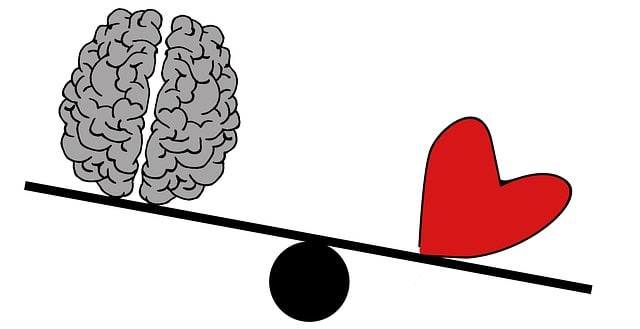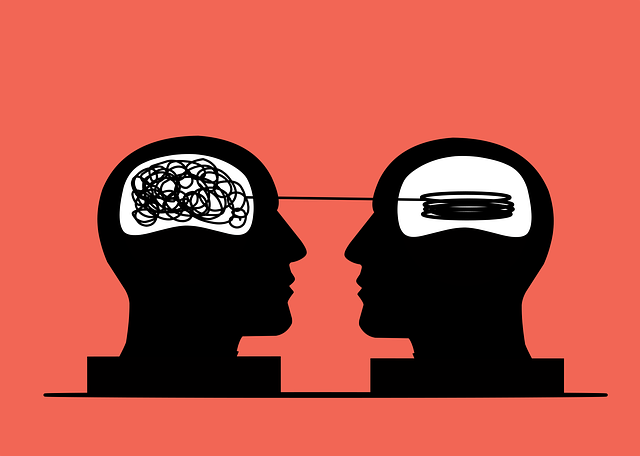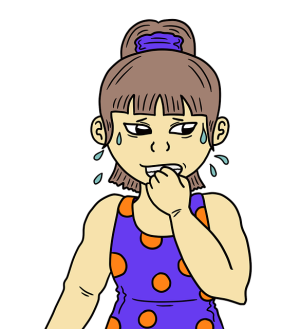Anxiety disorders, affecting millions globally, manifest as excessive fear, worry, or anxiety with symptoms like restlessness and panic attacks. Recognizing these signs is crucial for accessing effective anxiety treatment, which may include therapy, medication, or both tailored to individual needs. Therapeutic programs offer structured support, empowering individuals to develop coping strategies through evidence-based methods like cognitive-behavioral therapy (CBT) and mindfulness practices. CBT targets negative thought patterns, while mindfulness teaches non-judgmental observation of thoughts and feelings. Exposure therapy helps confront fears, and relaxation techniques promote physical calmness. Group therapy and support networks provide community and shared experiences. Medication complements therapy for enhanced outcomes, but requires monitoring by healthcare professionals. Integrating coping mechanisms into daily routines and maintaining a supportive environment are key to long-term management.
Anxiety disorders, affecting millions globally, demand effective therapeutic interventions. This comprehensive guide explores various strategies for managing anxiety, from understanding its diverse forms and symptoms to investigating leading treatments like Cognitive-Behavioral Therapy (CBT) and Mindfulness-Based Therapies. We delve into exposure therapy, relaxation techniques, group therapy, medication’s role, and long-term strategies for sustained anxiety control. Discover proven methods for conquering anxiety and reclaiming your life.
Understanding Anxiety Disorders: Types and Symptoms

Anxiety disorders are a group of mental health conditions characterized by excessive and persistent fear, worry, or anxiety. They affect millions of people worldwide and can significantly impact daily life. Understanding the types and symptoms is crucial in recognizing when professional help is needed for effective anxiety treatment. Common types include generalized anxiety disorder (GAD), where individuals experience excessive and uncontrollable worry about various aspects of life, panic disorder (PD), marked by recurrent and unexpected panic attacks, and social anxiety disorder (SAD), characterized by intense fear and avoidance of social situations.
Symptoms can vary but often include restlessness, fatigue, difficulty concentrating, irritability, muscle tension, and sleep disturbances. In some cases, individuals may also experience physical manifestations like nausea, sweating, or a racing heart. Recognizing these signs is essential in seeking appropriate anxiety treatment, which can involve therapy, medication, or a combination of both, tailored to address the specific needs and symptoms of each individual.
The Need for Therapeutic Interventions

Anxiety disorders are among the most prevalent mental health concerns globally, significantly impacting individuals’ quality of life and daily functioning. While many people experience occasional anxiety, for others, it can become a debilitating force that takes over their lives. Overcoming anxiety often requires more than willpower; it demands professional guidance and therapeutic support. Therapeutic anxiety management programs offer just that—a structured approach to understanding, managing, and eventually conquering anxiety-related symptoms.
These interventions are crucial in helping individuals develop effective coping strategies tailored to their unique needs. Through various evidence-based techniques, such as cognitive-behavioral therapy (CBT), mindfulness practices, and relaxation training, these programs empower participants to challenge negative thought patterns, face fears, and regulate emotional responses. By addressing the root causes of anxiety and providing practical tools for long-term management, therapeutic interventions play a vital role in fostering resilience and enhancing overall well-being.
Cognitive-Behavioral Therapy (CBT): A Popular Approach

Cognitive-Behavioral Therapy (CBT) is a popular and effective approach to anxiety treatment, focusing on identifying and changing negative thought patterns and behaviors that contribute to anxiety. This therapy helps individuals understand how their thoughts influence their feelings and actions, aiming to replace unhelpful cognitive processes with healthier alternatives. CBT involves various techniques such as challenging negative thoughts, gradual exposure to feared situations, and learning relaxation strategies.
By engaging in CBT, individuals can develop coping mechanisms tailored to their specific needs. Through structured sessions with a qualified therapist, they learn to manage anxiety symptoms, improve problem-solving skills, and enhance overall well-being. CBT has been extensively researched and proven successful in treating various types of anxiety disorders, making it a go-to choice for many seeking effective anxiety treatment.
Mindfulness-Based Therapies for Anxiety Relief

Mindfulness-based therapies have emerged as a powerful tool in the arsenal of anxiety treatment. These programs focus on training individuals to be fully present and aware of their thoughts and feelings, without judgment. By cultivating mindfulness, people can learn to observe anxious thoughts and sensations as they arise, rather than reacting impulsively or becoming overwhelmed. This practice has been shown to reduce symptoms of anxiety, improve emotional regulation, and enhance overall well-being.
One popular form of mindfulness-based therapy for anxiety is Mindfulness-Based Stress Reduction (MBSR). This program typically involves a combination of group sessions and individual practice, teaching participants meditation techniques, body scans, and other mindfulness exercises. By regularly engaging in these practices, individuals can develop greater self-awareness and learn to respond to stressful situations with more calmness and clarity. Through mindfulness, people can gain better control over their anxious thoughts and feelings, leading to significant improvements in their quality of life.
Exposure Therapy: Facing Fears Head-On

Exposure therapy is a powerful tool within anxiety treatment, offering individuals a direct way to confront and overcome their fears. This approach involves gradually exposing someone to the source of their anxiety in a controlled environment. By facing their fears head-on, patients learn that their perceived threats are not as dangerous as they once believed. Over time, this process reduces the intensity of their anxious responses, providing long-lasting relief from symptoms.
Through exposure therapy, individuals can develop coping strategies and gain a deeper understanding of their anxiety triggers. By systematically approaching feared situations, they build confidence and learn to manage their reactions effectively. This approach is highly effective for various types of anxiety disorders, allowing people to lead more fulfilling lives free from the constant fear and avoidance that often accompany anxiety conditions.
Integrating Relaxation Techniques into Treatment Plans

Anxiety treatment plans can be significantly enhanced through the integration of relaxation techniques, providing patients with effective tools to manage their symptoms. Techniques such as deep breathing exercises, meditation, and progressive muscle relaxation offer a peaceful escape from the mental turmoil associated with anxiety disorders. These practices not only help individuals recognize and regulate their emotional responses but also promote physical calmness, reducing the physiological effects of stress.
By incorporating these techniques into structured therapeutic programs, healthcare professionals can empower patients to take control of their mental well-being. Regular practice enables individuals to develop a stronger sense of self-awareness and resilience, making it easier for them to navigate triggering situations with newfound composure. The integration of relaxation methods proves invaluable in the comprehensive approach to anxiety treatment, ensuring patients receive holistic care tailored to their unique needs.
Group Therapy and Support Networks

Group therapy offers a powerful tool in anxiety management, providing individuals with a sense of community and shared experiences. In a supportive environment, members can openly discuss their struggles, gain insights from others’ perspectives, and learn coping strategies. This collective approach not only enhances understanding but also fosters a sense of belonging, which is vital for overcoming anxiety. The group dynamic allows individuals to see that they are not alone in their challenges, encouraging resilience and self-acceptance.
Support networks, including peer groups and online communities, play a complementary role in anxiety treatment. These networks enable continuous connection and support beyond the confines of formal therapy sessions. Members can share resources, offer encouragement, and exchange strategies, creating a powerful resource for ongoing mental well-being. Such social connections are essential for maintaining progress and providing a safety net during challenging times, contributing to effective long-term anxiety management.
Medication as a Complementary Tool in Anxiety Management

In many cases, medication can play a valuable role as a complementary tool in anxiety management alongside therapy and lifestyle changes. Selective serotonin reuptake inhibitors (SSRIs) and anti-anxiety medications are commonly prescribed to help reduce symptoms of anxiety disorders. These medications work by altering the levels of neurotransmitters like serotonin and dopamine in the brain, which are key players in regulating mood and emotions. By blocking the reabsorption of these chemicals, they enhance their availability, promoting a calmer state and reducing anxious thoughts.
When used in conjunction with cognitive-behavioral therapy (CBT) or other evidence-based therapeutic approaches, medication can significantly improve anxiety treatment outcomes. They can provide immediate relief from severe symptoms, allowing individuals to better engage in and benefit from psychological treatments. However, it’s crucial to remember that medications are not a one-size-fits-all solution and should be tailored to the individual’s specific needs. Regular monitoring by a healthcare professional is essential to ensure the medication is effective and well-tolerated.
Long-Term Strategies for Maintaining Anxiety Control

After completing an anxiety treatment program, maintaining control and preventing relapse is crucial for long-term well-being. This often involves adopting a comprehensive strategy that goes beyond immediate therapy sessions. One key aspect is integrating coping mechanisms into daily routines. Simple yet effective techniques like mindfulness meditation, deep breathing exercises, or progressive muscle relaxation can be powerful tools to manage anxiety spikes. Regular practice ensures these become second nature, providing individuals with instant remedies in stressful situations.
Additionally, fostering a supportive environment is essential. This includes maintaining open communication with therapists and building a strong support network of friends and family who understand one’s struggles. Regular check-ins and continued education about anxiety disorders can also help. Many programs offer resources and follow-up sessions to assist individuals in staying on track, ensuring they possess the necessary tools to manage anxiety effectively over time.
